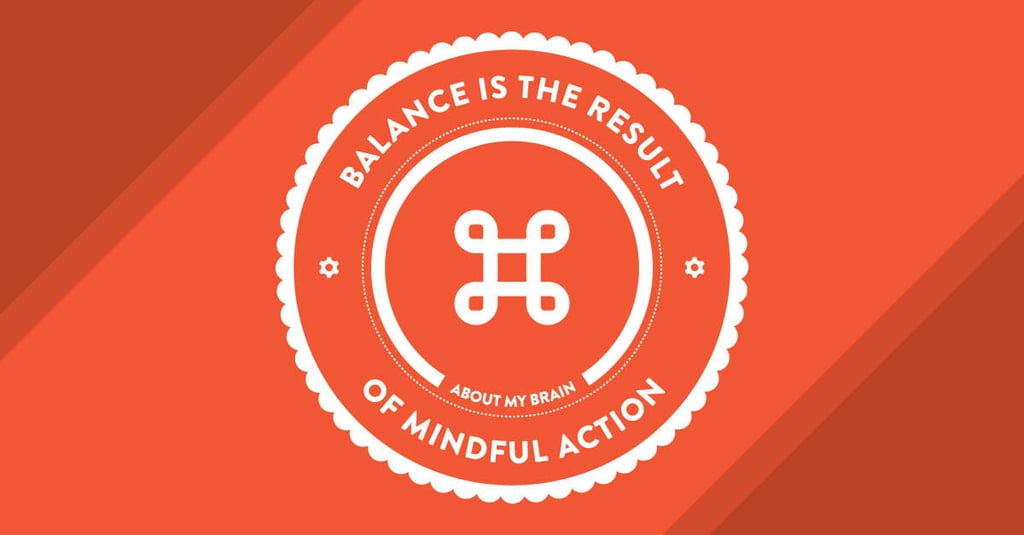Balance – The Secret Recipe For High Performance
We have noticed that many successful executives, working in high-performing and growing businesses are showing a genuine interest in their staff’s wellbeing because they understand that this is an indicator of productivity. However, approximately 70%+ are still struggling to establish balance in their world.
This is not balance in the conventional ‘work/life balance’ sense. It’s more about how we prepare our minds and bodies to perform at their best in all aspects of our lives. It refers to a series of actions and attitudes that help us to keep our brains performing at their best.
I’ve recently been doing a lot of work with leadership teams using the  and based on seeing the results of this group, we’ve got a lot of work to do in what is a foundational part of our world.
and based on seeing the results of this group, we’ve got a lot of work to do in what is a foundational part of our world.
There are a lot of people out of balance! As American author Paul Boese put it:
We come into this world head first and go out feet first; in between, it is all a matter of balance.
How Balance Fits In Our Leadership Model
Balance is one of the 16 pillars of the i4 Neuroleader Model. It sits within the competency of Performance. As I unpack in the ‘Performance’ post, the 4 pillars are:
- Integration
- Balance
- Ethics
- Mental Readiness
The 3 Elements Of Balance
Balance refers to a series of actions and attitudes that may help a person keep the brain performing at its best.
Physicality
Eating well, exercising and allocating time for relaxation and play are fundamental steps towards good health and also productivity. Physical activity can also enhance resilience by boosting endorphins and neurotransmitters (such as dopamine) that reduce the risk of depression. In addition, exercise reduces the release of the stress-related hormone, cortisol.
We still place too little importance on this aspect of leadership. Indeed, most organisations, even with the best will in the world, tack on ‘wellness’ programmes at the fringes. They need to be foundational. When leaders lack good physical health or are in a continuous state of tension, they can create toxic environments and model undesirable behaviours.
We know this, yet find it all-too-easy to put this stuff in the too-busy basket. Certainly that’s what the leaders I work with find. In reality very few businesses will call their people on this, but most will support the intention. Change then must start from within. 360˚ Feedback Reports, such as the  , are often a fantastic way of creating the awareness necessary to start to shift behaviours.
, are often a fantastic way of creating the awareness necessary to start to shift behaviours.
Down Time
What we do in our down time really matters to brain function. Time spent ‘doing nothing’ or simply being present in the moment and getting the correct amount of sleep (8 hours), are two brain activities that many of us neglect. This affects our capacity to concentrate, our mood, our decision-making and our creativity.
For leaders, it’s easy to press on. To complete one more task. It feels counter-intuitive that we can get more done by doing less. We need to understand that not all time is equally valuable.
If our brain is exhausted, we stop being able to operate from our executive brain (the pre-frontal cortex). We become more distracted, more emotional, more stressed and less attuned. Complex situations defeat us. That’s why we often get less done in the afternoons, when our PFC is depleted.
When we have regular breaks and better rest, our memory and clarity of thinking improves. Unsurprisingly we get more and better work done in less - not more - time.
Sociability
Our brain is hard-wired to be social. When we feel rejected or isolated, it gets affected in the same way as when we feel physical pain. Keeping the brain circuits active by socialising with others is crucial for human beings.
In her seminal TED Talk on vulnerability, psychologist and researcher, Dr. Brene Brown makes the profound points that:
Connection is why we are here. It’s what gives purpose and meaning to our lives.
In our increasingly busy workplaces, it’s it so easy to allow our social connections to dwindle, or even to feel they are an inefficient indulgence! As leaders, we must counter this with a new awareness.
Connecting with and to our teams is essential to engage and get the best from them. For a team to be more than a collection of isolated individuals, there must be connection and socialisation.
Hopefully, we’ve all been part of teams where such connection exists. Where we get a genuine sense of collaboration, achievement, purpose and belonging. You can’t bottle that stuff! It has to be created.
We simply need to take the time and effort as leaders to invest in empathising and socialising with our people. It shows us as energy, as customer service, as going above-and-beyond. In an age of same-same offerings, this simple act can be the difference between success and failure.
- i4 Neuroleader (353)
- Leadership & Culture (325)
- Brain Health & Wellbeing (202)
- Innovation (97)
- Performance (85)
- Our News (80)
- Collaboration (68)
- Agility (53)
- Practitioner Stories (44)
- In The Press (36)
- Make Me A Leader (33)
- Balance (31)
- Integration (30)
- Imagination (29)
- Awareness (23)
- Brain-Friendly Channel (22)
- Communication (22)
- Curiosity (21)
- Inspiration (19)
- Intuition (19)
- Attitude (17)
- Courage (16)
- Adaptability (14)
- Case Studies (14)
- Drive (14)
- Generosity (13)
- Brain-Friendly Leadership (11)
- Ethics (9)
- Mental Readiness (9)
- Influence (8)
- Retreat (6)
- Brain-Friendly Leadership (1)
- Oracle Cards (1)
- 1 April 2025 (1)
- 1 March 2025 (9)
- 1 February 2025 (3)
- 1 September 2024 (4)
- 1 July 2024 (2)
- 1 June 2024 (6)
- 1 May 2024 (2)
- 1 April 2024 (3)
- 1 March 2024 (1)
- 1 November 2023 (1)
- 1 August 2023 (1)
- 1 July 2023 (2)
- 1 June 2023 (2)
- 1 May 2023 (4)
- 1 April 2023 (2)
- 1 March 2023 (7)
- 1 February 2023 (4)
- 1 January 2023 (1)
- 1 September 2022 (1)
- 1 May 2022 (3)
- 1 April 2022 (1)
- 1 March 2022 (5)
- 1 February 2022 (4)
- 1 January 2022 (4)
- 1 December 2021 (2)
- 1 November 2021 (4)
- 1 October 2021 (3)
- 1 September 2021 (6)
- 1 August 2021 (1)
- 1 April 2021 (1)
- 1 December 2020 (2)
- 1 November 2020 (1)
- 1 September 2020 (1)
- 1 August 2020 (1)
- 1 July 2020 (3)
- 1 June 2020 (4)
- 1 May 2020 (3)
- 1 April 2020 (4)
- 1 March 2020 (6)
- 1 February 2020 (4)
- 1 January 2020 (2)
- 1 December 2019 (3)
- 1 November 2019 (3)
- 1 October 2019 (5)
- 1 September 2019 (4)
- 1 August 2019 (4)
- 1 July 2019 (4)
- 1 June 2019 (5)
- 1 May 2019 (9)
- 1 April 2019 (9)
- 1 March 2019 (8)
- 1 February 2019 (7)
- 1 January 2019 (8)
- 1 December 2018 (5)
- 1 November 2018 (10)
- 1 October 2018 (16)
- 1 September 2018 (9)
- 1 August 2018 (10)
- 1 July 2018 (9)
- 1 June 2018 (8)
- 1 May 2018 (9)
- 1 April 2018 (9)
- 1 March 2018 (9)
- 1 February 2018 (8)
- 1 January 2018 (8)
- 1 December 2017 (6)
- 1 November 2017 (9)
- 1 October 2017 (9)
- 1 September 2017 (8)
- 1 August 2017 (10)
- 1 July 2017 (8)
- 1 June 2017 (8)
- 1 May 2017 (9)
- 1 April 2017 (8)
- 1 March 2017 (6)
- 1 January 2017 (3)
- 1 December 2016 (4)
- 1 November 2016 (5)
- 1 October 2016 (4)
- 1 September 2016 (2)
- 1 August 2016 (4)
- 1 July 2016 (4)
- 1 June 2016 (2)
- 1 May 2016 (3)
- 1 April 2016 (3)
- 1 March 2016 (7)
- 1 February 2016 (2)
- 1 January 2016 (5)
- 1 December 2015 (2)
- 1 November 2015 (2)
- 1 October 2015 (4)
- 1 September 2015 (2)
- 1 August 2015 (2)
- 1 July 2015 (1)
- 1 June 2015 (3)
- 1 May 2015 (4)
- 1 April 2015 (5)
- 1 March 2015 (3)
- 1 February 2015 (3)
- 1 January 2015 (3)
- 1 December 2014 (3)
- 1 November 2014 (3)
- 1 October 2014 (3)
- 1 September 2014 (5)
- 1 August 2014 (4)
- 1 July 2014 (5)
- 1 June 2014 (3)
- 1 May 2014 (1)
- 1 March 2014 (1)
- 1 December 2013 (2)
- 1 November 2013 (1)
- 1 July 2013 (1)
- 1 June 2013 (1)
- 1 May 2013 (3)
- 1 April 2013 (1)
- 1 March 2013 (2)
- 1 February 2013 (1)
- 1 January 2013 (2)
- 1 November 2012 (1)
- 1 October 2012 (1)
- 1 September 2012 (1)
- 1 August 2012 (2)
- 1 July 2012 (1)
- 1 June 2012 (1)
- 1 May 2012 (2)
- 1 April 2012 (1)
- 1 February 2012 (1)
- 1 January 2012 (1)
- 1 November 2011 (1)
- 1 October 2011 (3)
- 1 September 2011 (2)
- 1 July 2011 (1)
- 1 June 2011 (1)
- 1 May 2011 (1)
- 1 April 2011 (1)
- 1 March 2011 (1)
- 1 February 2011 (2)
- 1 January 2011 (4)
- 1 December 2010 (4)
- 1 November 2010 (3)
- 1 October 2010 (5)
- 1 September 2010 (4)
- 1 August 2010 (4)
- 1 July 2010 (3)
- 1 June 2010 (4)
- 1 May 2010 (7)
- 1 April 2010 (5)
Subscribe by email
You May Also Like
These Related Stories

A Little Hugging Can Go A Long Way

Preparing Ourselves For High Performance




No Comments Yet
Let us know what you think